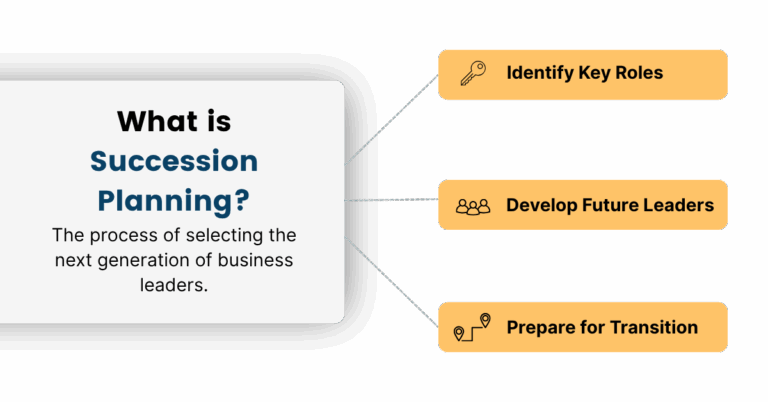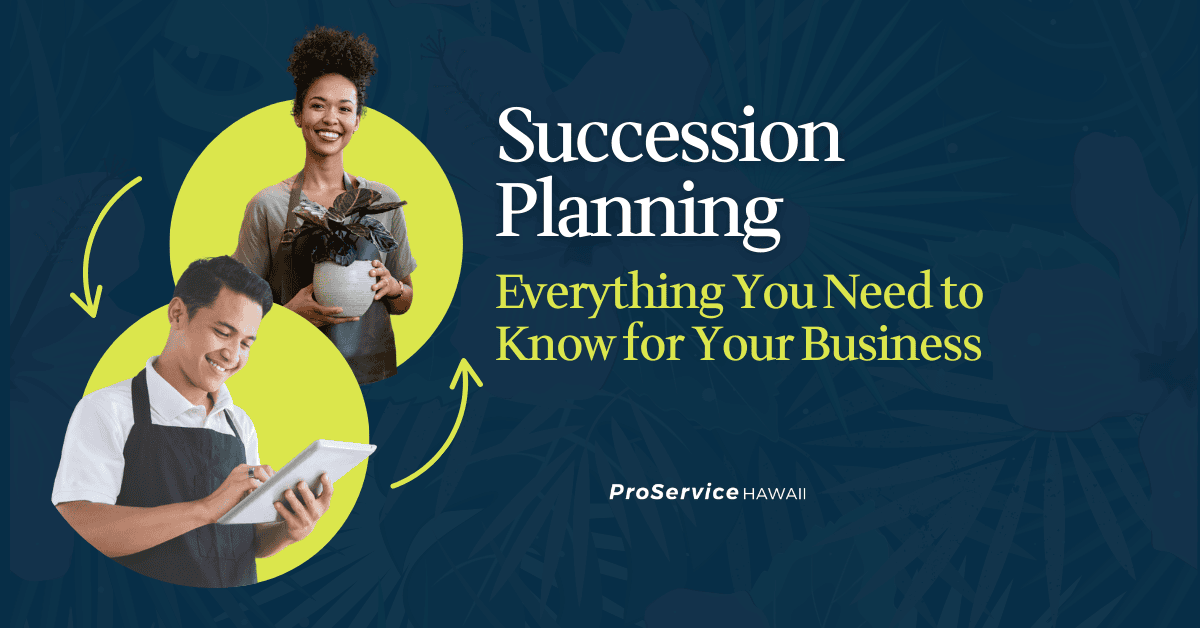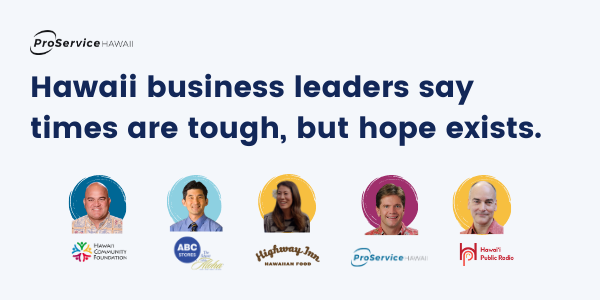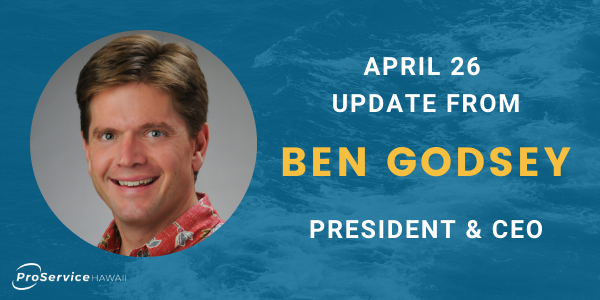Succession Planning: Everything You Need to Know for Your Business
Business succession planning often starts with a personal realization: you're ready to retire, but there's no clear plan for who will take over. Maybe a child, other relative, or a long-time employee is willing but not prepared to manage HR, payroll, or compliance. And finding someone outside the business? That’s rarely simple.
If you’ve poured years of hard work into your business, you want to see it continue — even after you step away. And your business can’t afford to take a pause just because you or another key leader leaves. But without a solid succession plan, key knowledge is lost, operations stall, and people are left wondering what’s next. That kind of uncertainty puts your reputation, your team, and your legacy at risk.
Succession planning is all about protecting what you’ve built by developing internal talent, so they’re ready and able to step up when the time comes. It protects institutional know-how, minimizes disruption, and sets the stage for long-term growth. Best of all, it ensures that the next generation can carry your business forward — without being overwhelmed by HR responsibilities they never signed up for.
This guide breaks down what succession planning is, why it matters, and how to build a strategy that keeps your business stable and thriving, no matter who’s in charge.

What is Succession Planning?
Succession planning is the process of identifying your business’s most important roles and making sure the right people are ready to step in when the time comes. A quality succession plan outlines who could take over key positions — whether it’s a family member, a long-time employee, or a future hire — and prepares them through mentoring, performance tracking, and addressing skill gaps. It also means thinking years down the road, not just reacting when someone gives notice.
You’ll need more than gut instinct to see that far ahead. Effective succession planning depends on quality data, clear timelines, and a long-term view of where your company is headed. That’s where HR comes in, supporting you with assessments, development plans, and ongoing progress tracking. With the right structure and support, your succession plan can act as a roadmap that supports your company’s long-term growth.
HR and Business Succession Planning
HR professionals are the ones connecting the dots in a succession strategy. Without HR’s input, succession planning can veer into guesswork or favoritism, both of which quickly erode trust. But not every business has the bandwidth or expertise to build and manage a comprehensive succession strategy in-house.
That’s why HR outsourcing — especially when it’s through a trusted partner like a professional employer organization (PEO). The best PEOs don’t just help with payroll or paperwork. They bring deep, cross-functional HR expertise to help you build and manage a succession plan that aligns with your business goals and your company culture. From performance tracking and employee development to compliance and benefits administration, they handle everything needed to prepare successors and facilitate a seamless transition. The numbers back it up: businesses that partner with PEOs grow twice as fast and are 50% less likely to go out of business than comparable organizations.
Why Succession Planning Matters
Building a succession plan helps you prepare for the future while improving your business today. No matter how many years you’ve put into your business, eventually, you’ll need to hand that knowledge off. Succession planning lets you do it intentionally — not in reaction to a crisis — and gives you confidence that your business will continue to reflect your values, reputation, and vision. Here are just a few benefits of a well-executed succession plan.
Improved Business Continuity
With a succession plan in place, you have a roadmap ready when key roles become vacant, reducing downtime and helping your company stay focused on its goals. A solid plan lets your team continue to produce excellent work without missing a beat when someone exits a critical role. Instead of scrambling when someone leaves or when you decide to retire, you’ll already know who’s next in line, what kind of mentoring or training they need, and how the transition will unfold.
Better Employee Retention
People want to know there’s a future for them at your company. Succession planning demonstrates that you recognize talent and are willing to invest in it, which can have a big impact on retention. By putting a plan in place now, you’re giving team members the time and structure to grow into the role — with support instead of pressure. It also sends a powerful message to your whole team: you believe in them, and the future of the business includes them too. Showing that you’re committed to your employees over the long term gives a real boost to your efforts to retain your best talent.
Stronger Employee Development
Succession planning forces you to take a close look at your workforce. You’ll identify skill gaps, strengthen your talent pipeline, and align employee development more closely with your organization’s long-term goals. In addition, hiring externally — especially for leadership roles — is expensive and time-consuming. A succession plan that helps you develop employees internally reduces costs and minimizes onboarding time. And as an added bonus, according to LinkedIn’s 2025 Workforce Learning Report, providing learning and development opportunities is the top retention strategy for organizations today.
Greater Stakeholder Confidence
Of course, succession planning isn’t just about protecting your role — it’s about protecting your people. Your team, your customers, and your family will feel more confident knowing there’s a plan in place. You’re ensuring your organization keeps going strong, reinforcing a sense of stability, even in uncertain times. And with the right partner to help you build a strong plan, you don’t have to figure it all out on your own.
How Succession Planning Works: A Framework
Succession planning doesn’t have to be complicated. What you need is a clear idea of who might take over key responsibilities when you’re ready to step back and how you’ll prepare them. Here’s a simple, practical way to think about succession planning for your business.

1. Know the Roles that Keep Your Business Running
Start by asking yourself, “If this person left tomorrow, what would break?” Look beyond leadership roles. Who handles payroll, scheduling, customer service, or operations? These might not be the flashiest roles, but they’re critical to keeping things going.
Make sure to include both current and emerging roles in your assessment, as business needs change, and your succession strategy should change with them. Document these roles and create detailed profiles outlining required experience and skills, along with each role’s business impact.
2. Source Exceptional Talent
Once you’ve mapped key roles, shift your focus to your company’s people. Who on your team has the potential to grow into these positions? Ask yourself questions like these:
- Who knows how things really work?
- Who do others turn to when something goes wrong?
- Who genuinely cares about the future of the business?
And don’t just consider past performance — look at traits like adaptability, initiative, and emotional intelligence. You want candidates who can handle increased responsibility, not just those who excel in their current tasks.
Of course, there will be times when you need to look outside your organization to find the right successor candidate. After identifying the need for an external hire, create a job description that accurately describes the responsibilities of the position, as well as the qualifications and background you're looking for. During the hiring process, carefully assess how candidates fit into your long-term plans, ensuring that their experiences and outlook match the requirements laid out in your succession plan.
3. Select Your Successors
Now that you’ve identified critical positions and standout talent, match them up. For every key role, assign one or more potential successors. Use a combination of performance data, peer assessments, and manager feedback to select successors, but don’t rush it. Sometimes, the best choice isn’t the most obvious one. You might find a future operations lead in an ambitious project manager, or your next client services director in a product-focused team lead who knows how to build trust. Be sure to include interim options, too, as even short-term vacancies can disrupt operations if you're not prepared.
4. Prioritize Employee Development
Once you’ve matched people to roles, you need to close any skill and knowledge gaps. To supercharge employee development, offer mentorship opportunities, give employees stretch assignments, and expose them to cross-functional projects. You can’t fully simulate the pressure of leadership, but you can make sure they’re not stepping in cold. You should also consider leveraging modern tools like learning management systems (LMS) to facilitate continuous, self-paced development.
In addition, hold regular professional development conversations, rather than only touching base on it annually. Treat development plans like working documents to be reviewed regularly with each successor and their direct manager. By maintaining alignment between successors’ individual goals and your organizational needs, you’ll ensure that every task will bring them closer to being ready while keeping them engaged.
5. Regularly Monitor Progress and Update Your Succession Plan
Roles, responsibilities, and people all evolve, so your succession plan should stay agile to meet these changing circumstances. Check in at regular intervals to see how your successors are progressing and whether your plan still reflects current business priorities. Team members might experience changes in interest or availability, or a new high-potential employee could emerge that better fits a critical role. The more responsive your approach, the more effective your plan will be when the time comes to put it into motion.
Succession Planning Mistakes to Avoid
When done right, succession planning leads to a resilient business with the people and systems in place to weather change. But even the best businesses can stumble when it comes to planning for retirement or leadership transitions. Here are four common mistakes — and how you can steer clear of each one.
1. Ignoring the Need for Frequent, Clear Communication
If you’re developing a succession plan behind closed doors, you’re setting yourself up for failure. Team members may not know what’s expected of them, who’s being considered for important roles, or how they can grow into one. That silence creates uncertainty, and worse, it leaves employees feeling overlooked.
You don’t need to announce every detail, but you do need to let people know there’s a plan and that development opportunities are available. Schedule regular one-on-one check-ins, include succession-related goals in performance reviews, and make professional growth part of the daily conversation. When people understand the path ahead, they’re more likely to walk it with you.
2. Failing to Create a Written Succession Plan
Relying on memory, assumptions, or informal conversations is a risky bet when it comes to business succession planning. If a key leader steps down unexpectedly, verbal plans won’t help you respond quickly or confidently. Without documentation, you lose clarity and accountability, both of which are critical when the clock is ticking.
Your succession plan doesn’t have to be a massive document. Even a concise, one-page brief that outlines who might take over, what training they need, and your ideal timeline can make a big difference. Ideally, your written plan will include details about key roles, designated successors, development timelines, and what actions to take during a transition. Store it where leadership can access it easily, and review it as described above. Putting things down in black and white prevents confusion while helping your team and even your customers feel more secure, knowing that your organization has thought through what happens next.
3. Not Looking at Long-term Needs
It’s easy to focus only on your employees currently in line for key positions. But what happens when your business keeps scaling, launches new offerings, or shifts its operating model? Succession planning that only accounts for today’s business structure will crack under the pressure of tomorrow. Ask yourself: how might your business grow, change, or face new challenges in the years ahead? Then assess whether your current talent pipeline aligns with these anticipated changes. Developing successors that lean into upcoming trends is exactly how you build long-term agility and stay competitive in a fast-changing market.
4. Failing to Track Progress
How do you know your transition plan is working? You need to measure what matters to accurately assess progress and make necessary tweaks to your plan. Look at things like whether your successor is sticking around or how ready the team feels when responsibilities shift. Other key performance indicators (KPIs) you can track include your company's internal promotion rate and time-to-fill for critical positions. Continually share metrics with leadership, and adjust your efforts based on what the data tells you.
5. Planning on Your Own
You don’t need to figure all this out by yourself. That’s where a PEO with years of experience can help. It takes the guesswork out of succession planning, from identifying critical roles to helping prepare the next generation of leadership. Whether you’re transitioning to other family members, handing off a key role to a long-time employee, or just need help making a plan, a PEO with local expertise is just what you’re looking for.
Develop a Succession Plan that will Stand the Test of Time
Building a reliable succession plan doesn’t have to drain your team’s time or distract you from running your business. With the right HR partner, you can turn succession planning into a strategic advantage that safeguards your company’s future and positions your team to smoothly handle transitions.
By working with an HR outsourcing provider that has deep expertise in talent development, workforce planning, and compliance, so you’re not left figuring it all out on your own. Instead of guesswork, you get a clear roadmap, the right tools, and ongoing support to execute your succession strategy with confidence.
ProService, Hawaii’s top PEO, delivers all that and more. From identifying mission-critical roles to developing internal talent, ProService provides the expert guidance and resources your company needs to build a plan that’s future-proof. Their local knowledge and hands-on service makes succession planning a seamless, strategic process backed by HR expertise that extends far beyond employee transitions.







